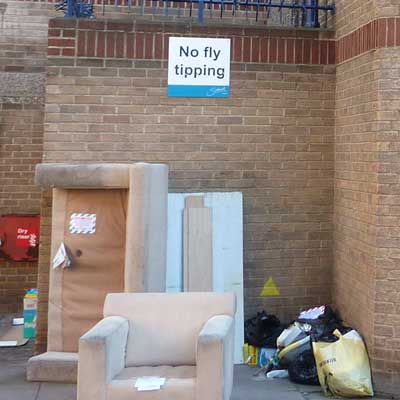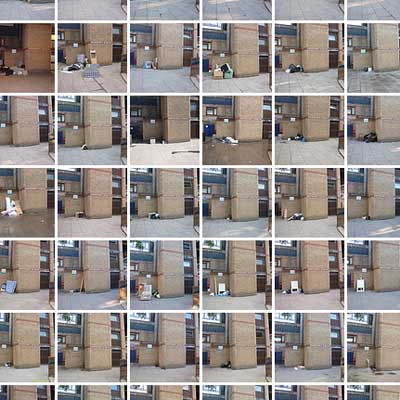A fly-tipping chronicle
- Complaining about the Mainland - 17th August, 2024
- New island designation – is it just greenwash? - 26th April, 2024
- Police and Crime Commissioners – a solution or a problem? - 21st April, 2024
London photographer Simon Lee spent a few months this year walking by a block of flats at the Elephant and Castle, on his daily commute. Perronet House is a social housing block in south-east London, and Simon was so taken by his regular encounters with what he describes as “some of the most defiant littering” that he decided to document it online.

On his Flickr stream he’s collated over 80 images of the same spot, each day, and the junk that people leave there. It’s an intriguing, and quite compelling glimpse into the mundane; and multiplied eighty-fold, makes a real impression of the impact our throwing-away habit can have on a public place. Simon says of the area:
Elephant and Castle isn’t very salubrious. It’s mainly known for being a set of large roundabouts (with bus connections to just about everywhere in London) which has somewhat intimidating subways, big estates and a pretty bleak shopping centre. The block of flats that this fly-tipping takes place against is fairly large but the street that this bit of it is on has opposite it a row of nice terraced houses. Like anywhere in London walking two minutes can make a big difference.

Objects discarded include furniture, light fittings, doors, plenty of cardboard and several computers. Simon remarked:
As it’s normally just household things it’s normally the scale of the dumping that surprises me sometimes: the stack of mattresses was quiet impressive and I was almost tempted to see if the rowing machine worked. Might have been a bit tricky getting it home though.

I asked Simon what made him take the pictures, and whether there would be any more. He said:
I liked the idea of documenting a location from one perspective just to see how it changes – a bit like a very lo-fi time-lapse. I think the persistent defiance of the sign so ritually also appealed to my sense of humour. The main reason right now I’m not taking pictures of it is because my commute has changed – not very dedicated I know. When I am in the area though I do make an effort to try and get a picture. I’m sure I’ll be passing back there with my camera sometime soon.
I like this sequence, perhaps because of what is not there. We never see anyone dumping. We never see the diligent people who come and clear this stuff up – in fact, we hardly see anyone at all. It’s as if the rubbish just materialises there. Also, there’s an almost unseen Robinia tree there – you can just see a few twigs in the photo, and later in the season the flowers fall to the ground, as the tree adds its own litter. Thanks to Simon for taking the time to talk to me and for generously licensing his Flickr images under a Creative Commons licence so we can enjoy them here too. We look forward to seeing what more Perronet House has to offer soon. Meanwhile, go to Flickr to enjoy the full experience. I strongly suggest you activate the slideshow feature, and just watch that rubbish streaming by.

I live in Perronet House and the Bulky items left in this space is collected everyday by the council. Its an excellent service and once they take the items, the space is left spotless. Very efficient service.
Indeed, you are correct: dumping is what Americans call it.
However you may have inadvertently invented a new Olympic sport. How do we go about getting it ratified?
I imagine that “no fly tipping” means no dumping or something like that in British English. At first I imagined a giant bovine-diptera chimera that youths would run up and try to tip over.
Can you please translate for your American readers. “Two countries separated by a common language” and all that.